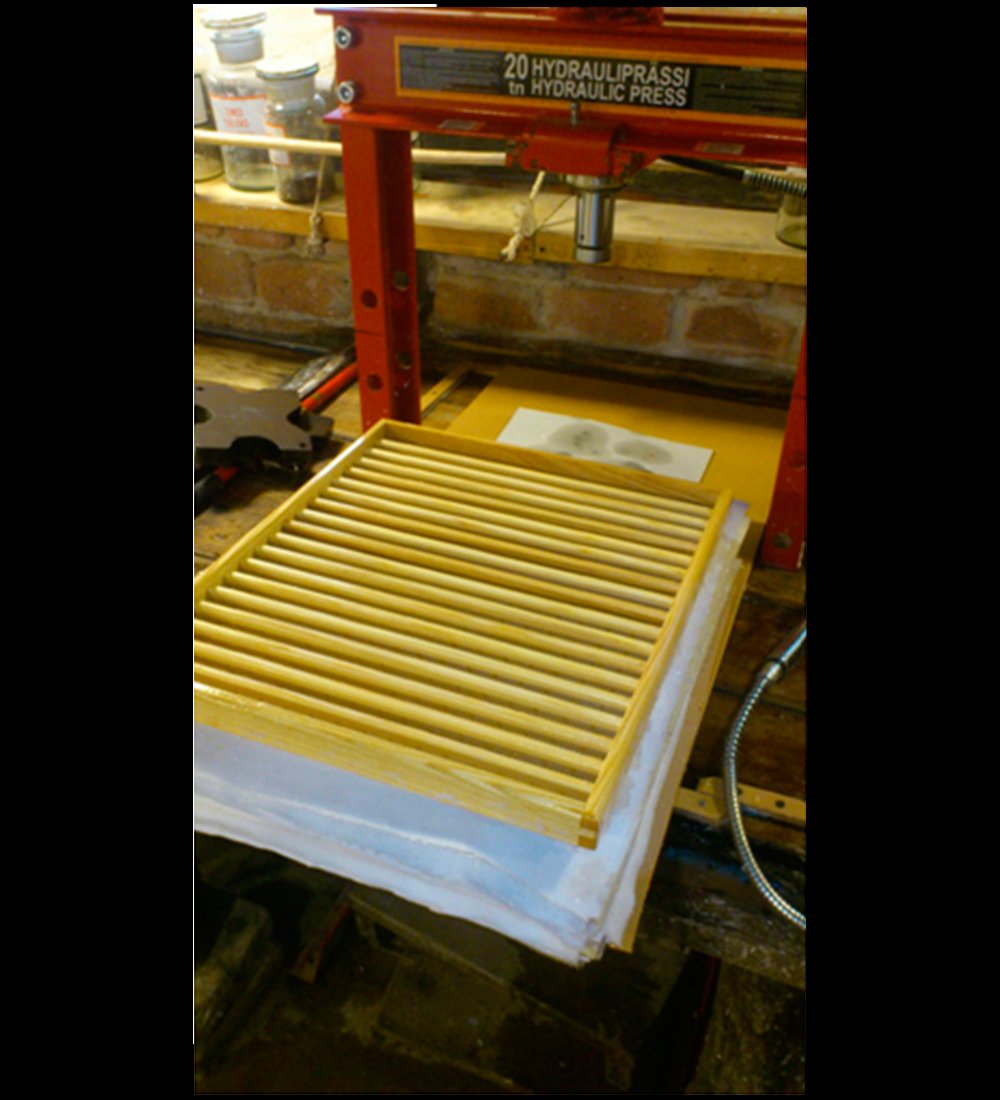HAND PAPERMAKING FOR THE RECONSTRUCTION PROJECT OF THE MIROW CASTLE WALLPAPERS
Autor:
Maris Allik
Year:
Anno 2015
Category:
Conservation
During the reconstruction project of historical wallpapers of the Mirow Castle 513 sheets of 110g/m² traditional rug paper were made in size of 500 x 420 mm. As hand made laid paper was required for the reconstruction of the wallpaper, a custom- made laid mould and deckle were made specially for the project at the Eifeltor Mühle in Germany. The ash wood mould has copper bronze laid surface, chain lines parallel to the 42cm side, sewn to supporting mesh and wooden ribs.
The specific characteristic of traditional handmade laid paper are the chain lines visible in the sheet as a watermark and patchy edges of the sheet that form during the process of water draining from the fresh sheet on the mesh after the deckle is lifted off the mould.
The sheets were formed using traditional methods and materials. Up to the 17th century paper was made by hand in Europe, one sheet at a time, lifting the pulp from a vat with a hand-mould and pressing the sheets between wool felts.
The wallpapers of the period were glued together from single sheets before the pattern could be printed on the wallpaper.
The pulp for the sheets of the project was prepared of raw cotton and hemp halfstuff, also supplied by the Eifeltor Mühle, and a little abaca was added for wet strength.
The papermaking process took place in the Tallinna Paberikoda, where a Hollender beater is used for preparing the pulp and a hydraulic press for sheet formation.
The sheets were dried in a drying box and stabilized in press.
The tradition of handmade paper today is widely honoured in the Orient. In the western world handmade paper is mainly used by artists and conservators. If an historical object needs to be reconstructed, there is no alternative among various kinds of machine-paper, which will not reproduce the uniqueness of a handmade sheet.
REFERENCES:
Muinsuskaitseamet. Restaureerimise infovoldik (32) Ajaloolised tapeedid. Kadri Kallaste http://www.muinas.ee/files/Ajaloolised%20tapeedid.pdf







